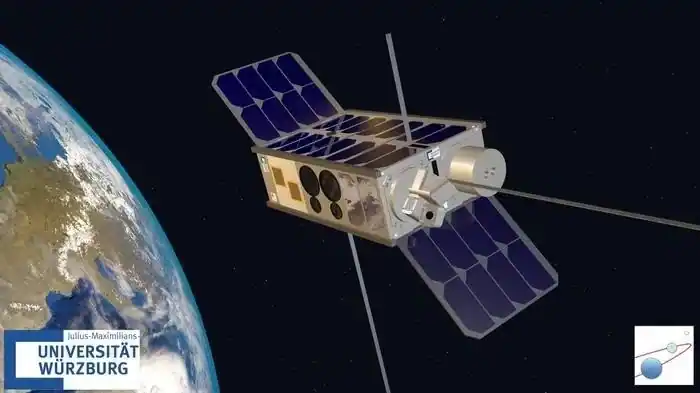SONATE-2 NanoSat: AI's Cosmic Breakthrough
The SONATE-2 nanosatellite, a cutting-edge component of the upcoming Würzburg space mission, is now entering its final phase. This advanced satellite is ready to revolutionize space exploration. It will conduct groundbreaking tests on the latest artificial intelligence (AI) hardware and software technologies in orbit.
After two years of intensive development, SONATE-2, the eagerly awaited nanosatellite, is scheduled for launch in March 2024. A team of aeronautical engineers at Julius-Maximilians-Universität (JMU) Würzburg in Bavaria, Germany, built this technological marvel. The project was carried out under the supervision of Professor Hakan Kayal. It marks the end of JMU’s two-decade commitment to upgrading tiny satellite missions.
JMU, with a rich history of small satellite missions, proudly unveils SONATE-2 as yet another pinnacle achievement. The nanosatellite boldly explores AI integration in space travel, representing a technological milestone in a concise 20 words.
Training the AI on Board the Satellite
SONATE-2 will test revolutionary AI tech in near-Earth space, aiming to detect anomalies on planets and asteroids in future missions. The Federal Ministry of Economic Affairs has generously allocated 2.6 million euros to support this groundbreaking project, underscoring its significance.
What sets SONATE-2 apart is the unique approach to AI training, as highlighted by Professor Hakan Kayal. Unlike traditional methods utilizing powerful Earth-based computers, SONATE-2 opts for on-board AI training. Kayal emphasizes the impracticality of ground training for future tasks like investigating unknown asteroids. The object’s unknown nature necessitates on-ground measurements and recordings.
SONATE-2 Tests Many Other Technologies
On-board AI training minimizes time delays associated with transmitting data to Earth for processing. This is especially crucial for distant missions. The heightened autonomy with direct on-board AI support enhances mission efficiency. It expedites the detection and identification of objects on the asteroid.
Kayal’s team, determined to assess the feasibility of implementing these scenarios, conducts trials in Earth’s orbit. Four on-board cameras capture essential imagery for AI training. This enables the AI to autonomously identify anomalies by acquiring knowledge of geometric patterns on Earth’s surface.
Mission Control Center on the University Campus
Beyond AI experiments, SONATE-2 serves as a comprehensive testing ground for various small satellite technologies. These include an automated lightning detection and recording system and an electric propulsion system developed with the University of Stuttgart.
Anticipated to launch on a SpaceX rocket from the West Coast of the United States, SONATE-2 has proven its resilience. Demonstrated resilience through rigorous endurance tests, including a successful launch simulation.
SONATE-2, a 6U+ CubeSat, with a shoebox size and a weight of about 12 kg, showcases impressive capabilities in its compact design. It has a mission control center on the Hubland campus in Würzburg.
Satellite Project Offers Working Field for Students
Dr. Oleksii Balagurin leads a dedicated team of six individuals in satellite and ground system development. They provide valuable hands-on experience for participating students.
Beyond development, students actively contribute to the project. They gain a unique opportunity to remain involved in the satellite mission throughout its operational phase.
The control center continually deploys and evaluates new software on SONATE-2, ensuring ongoing advancements and innovation.
Sponsoring
The German Federal Ministry supports SONATE-2 at DLR financially for economic and climate action. This support aligns with a resolution from the German Bundestag (FKZ 50RU2100).

